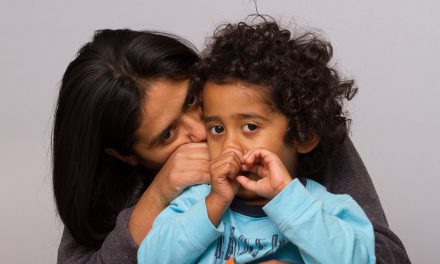The Kansas City Health Equity Learning and Action Network (the LAN), under the leadership of the Health Forward Foundation and in partnership with the Institute for Healthcare Improvement (IHI), and the KC Health Collaborative (KCHC), actively develops comprehensive strategies and action plans to dismantle medically racist systems that circumvent optimal health and perpetuate health inequities for people of color.
Health Forward’s purpose is to support and build inclusive, powerful, and healthy communities characterized by racial equity and economically just systems. IHI has spent more than two decades leveraging improvement science to advance and sustain health outcomes in health and health care globally. KCHC is a multi-stakeholder, nonprofit, community organization that works to catalyze meaningful health and health care delivery improvements to position Kansas City as a national leader in health, well-being, and economic vitality.
Collectively, these organizations established the LAN which convenes the region’s health ecosystem including federally qualified health centers (FQHCs), community-based health clinics, health systems, physicians, payers, employers, public health departments, and community-based organizations.
With more than 50 organizations participating, the LAN provides a forum for engagement, girded by a shared agenda, with education, training, tools, and expertise to markedly change systems, policies, and structures. The goal is to eliminate disparities in health care delivery, while realizing measurable improvements steeped in equity-centered, culturally responsive health outcomes for all health care consumers.
The group’s mission aligns with a long list of health care sojourners who saw the bough break more than a century ago and who dared to buck structures designed to perpetuate health disparities, inequities, and injustices for Black and Brown people. Now the LAN is on the frontline battling medically racist structures that have managed to persist since the early framing of Kansas City’s health care system.
In the early 1900s, health care access was systematically denied to people of color, and when it was offered at the old City Hospital in Kansas City, Black and Brown patients received substandard care or outright neglect. For people of color, sheer access to health care services was the critical need.
Living conditions for many Black and Brown people were colored by a lack of culturally responsive and compassionate care, housing access structured by red lines, and post-slavery wages designed to keep families downtrodden and impoverished. Add to that the weathering effects of racism on one’s physical and mental health, and naturally health outcomes for Black and Brown people flagrantly lagged behind their White counterparts.
But as fate would have it, there was always a ram in the bush.
‘Don’t despise the humble beginnings’
Thomas C. Unthank, M.D., the son of slaves, graduated from Howard University in 1898 and landed in Kansas City a year later. One of the founders of the Black-led and Black-serving Douglass Hospital in Kansas City, Kansas, along with S. H. Thompson, M.D., Unthank was commissioned to serve nonwhites during the great flood of 1903. Reminiscent of Katrina in 2005, it displaced area residents and forced them to move into temporary facilities. Three physicians were appointed by a health committee to watch over flood victims. Dr. Unthank was assigned to serve the “colored” victims. Black and Brown people affected by the flood received medical care in a makeshift, ill-suited emergency shelter only after White flood victims were seen and treated first.
Dr. Unthank and his cohort of doctors, including John Edward Perry, M.D., and Dr. Thompson, among others, were more than overwhelmed by the community’s health needs, poverty, and blight. Because access to health care was tentative, the desire for health equity could only be aspirational. Even with a small proliferation of Black private doctors, there were no facilities that served the more than 23,566 residents of color. Around the same time, Black doctors and others in medical communities across the nation were debating the merits of establishing segregated hospitals to treat people of color.
Dr. Unthank and other Black physicians doubled down on the idea of a segregated hospital and lobbied to assume the deteriorating City Hospital, known as General Hospital No. 1, (later renamed Truman Medical Center, and now called University Health) to care for nonwhite patients. By 1908, efforts paid off as White patients had a shiny, newly constructed hospital. The dilapidated physical structure that once was General Hospital No. 1 was now General Hospital No. 2. It became the first public hospital used exclusively for Black people in the United States. However, there was a caveat: Black doctors would not be allowed to serve on the staff of their own hospital.
Dr. Unthank and a network of Black health care practitioners, relentless in their effort to provide not only health care access but equitable health care to Black and Brown patients, remained steadfast. In 1914, four Black doctors were granted permission to treat their hospital’s patients of color.
Dr. Perry, one of the original four practicing physicians at General Hospital No. 2, broke away to start what would become the first Black-owned hospital in Kansas City. With support from Black philanthropists, Dr. Perry opened Wheatley-Provident Hospital at 1826 Forest, formerly St. Joseph Parochial School, and offered advanced clinical training to nonwhite health practitioners.
At the time, Black children were denied pediatric services from Children’s Mercy Hospital. Fortunately, allyship from Dr. Katherine Berry Richardson, one of Children’s Mercy’s founders, made the difference. After trying but failing to get the hospital to admit Black children, because it feared that doing so would jeopardize funding from White donors, she found new donors and raised funds to build a pediatric wing at Wheatley-Provident that opened in 1926. By 1936, the hospital was one of 122 Black-owned and operated hospitals in the U.S., and one of 16 to receive an “A-class” rating by the American College of Surgeons.
Dr. Unthank and many others continued the sojourn and fought for what was then a state-of-the-art new hospital that served people of color through the dawn of the Civil Rights Movement in 1957 when General Hospital No. 1 and No. 2 integrated. Dr. Samuel U. Rodgers followed up in 1968 by opening the first FQHC in Missouri, and at the time, only the fourth center of its kind in the U.S.
Sometimes on separate crusades, but always doing the work together, the collective impact of those who were the first to procure this equity journey allowed generations to proceed; for they taught the next generation of doctors and nurses, healed wounds, treated chronic illnesses, and performed surgeries that allowed the circle of life to continue.
This retrospective does not come close to depicting how health care was structured – from the very beginning – with systems and policies, fueled by racism, and designed to differentially favor one group over others. Nor does it depict the many players who contributed greatly to the cause of equitable health care delivery for Black and Brown people. But what it does offer is a prelude for the next wave of crusaders, hungry for and committed to catalyzing meaningful improvements in health care delivery that position Kansas City as a national leader by improving health and health care outcomes for everyone.
Today, 52 organizational LAN members have committed to making health equity a strategic priority, to include CEO agreement to work to diversify their boards of directors with people of color. Fifteen of these organizations have committed to take equity-centered methodologies back to their respective institutions, identify practices that perpetuate health injustices, and develop coherent strategies to address them through an anti-racist lens. But the makings of this blueprint started several years ago as a seed that grew deep roots in the heart of Health Forward’s CEO Qiana Thomason.
Seed for the sowers
“The LAN was a seed planted in my heart probably about five to seven years ago before I arrived at Health Forward,” she said. “And that seed was planted in my heart, in part, because of my own experience with health injustice as a woman of color who could have been a maternal mortality health statistic.”
Watching flagrant, unchecked health inequities, at the expense of Black and Brown people, cultivated the seed. Then COVID hit. “Being in this seat and knowing the agenda setting and convening power that it holds, in 2020, it was clear that it was time to act on this vision that I had been nurturing for years,” Thomason said.
Black and Brown people were dying from COVID at three and four times the rate of White people. Social determinants of health were akin to Black and Brown people in the early 1900s, with co-occurring illnesses and comorbidities that led to dismal health outcomes and mass casualties.
“I can’t tell you how many phone calls I got from the community asking, ‘What should we be doing?’” Thomason said. After countless calls, Thomason said she quickly realized that next steps could not look like siloed action but rather a collective agenda where all the different stakeholders were seated at the table.
Thomason was aware that IHI had launched a global initiative, Pursuing Health Equity, which convened health professionals from around the world to study equity in health care, then redeployed them back to their respective institutions and communities to implement change. Intrigued by the model, she queried people in her network to see who knew whom at IHI. When she found no one, she cold called IHI.
“So, I called IHI and asked, ‘What if you could do this in a place-based fashion, in one community? And what if an entire community decided to do together what you’re doing with different actors across the globe?’”
Now, IHI was intrigued. After some ideation on what something like this could look like, and conversations with KCHC, Thomason got back on the phone and reached out to community leaders. “I asked, ‘If we build this, would you come and would you help shape it?’” The answer was a resounding yes. According to IHI, the Kansas City Health Equity Learning and Action Network is the only place-based initiative they are aware of that has a broad set of multi-sector players focused on health equity-centered quality and performance improvements – and antiracism.
“It’s about understanding the work of health equity with an antiracism lens,” said KCHC Executive Director Ron Whiting. “You need to understand racism and how individual beliefs and individual behaviors intersect with this work.”
An examination of the heart
The LAN is not alone in its calling to confront medical racism. Dr. Bram Wispelwey noticed disparities in how Mass General Brigham in Boston prioritized the health of some of its cardiac patients. White patients were more often treated on cardiac care floors, as they should have been. However, Black and Hispanic patients, at greater risk of succumbing to heart disease, were more often relegated to general floors with older, non-private rooms that also lacked specific care and treatment plans for individuals with failing hearts.
Although initially dissuaded, Wispelwey conducted a formal analysis as a project to complete his master’s degree in public health at Harvard. And as suspected, Black and Hispanic patients were less likely than White patients to be admitted to cardiology. After push back, reticence, and in some instances denial, Wispelwey, now a public health physician and Harvard physician on global health and population, as well as co-author of the work that detailed the final analysis, called the findings an example of structural racism and an “intrahospital driver of racial inequities.”
A short time after, two physicians at the hospital wrote an article stipulating they were launching a pilot program that included inserting digital flags into patient software as reminders of the inequities in cardiac admissions. The goal was to make cardiac care the default for all cardiac patients unless circumstances warranted otherwise. Right-wing protestors gathered outside of the hospital claiming, among other things, that the doctors were “anti white.”
“If we are really going to do this work, this kind of stuff is going to come up,” Whiting said. “So, you need new systems and structures and these structures are going to have to call out racism – you can’t fix it if you don’t call it out. That’s the kind of thing that will vex this work, it’s the kind of thing that can cause fear among some health care leaders, but it’s also an opportunity for them to demonstrate leadership.” Kansas City deserves to have the highest possible quality of care and our health care leaders need to be as bold in seeking quality as anywhere else in the country.
Whiting said if the best possible health outcomes are truly wanted for everybody, and if no one is looking at the differential impact in terms of diagnosis, treatment, and outcomes, across different populations, then quality isn’t improving for everybody, it’s just improving for some.
“It’s not about calling out individual people, but instead, identifying and changing systems that propagate racism,” Whiting said. “You see it in race-based clinical algorithms which result in inequitable outcomes – often exacerbating health inequities for specific groups. And this is just one example of how unjust systems thwart quality.”
Thomason said quality is not about how many stars a hospital has attached to its name, but about patient safety and well-being. “When you look at the data, which includes stories, we see the harm that’s being done in clinical spaces – consciously or unconsciously,” she said. “Many who are resistant are scientists or believe in science and believe data in other respects, even if they don’t respond to the humanity that’s in front of them. And if we believe in science, which is very much data driven, then we must believe that our biggest opportunity for quality lies with equity… You can’t have quality without equity, and you can’t have equity without quality.”
Whiting added that health equity hurts no one. “You’re not going to lose anything. The worst thing that’s going to happen is that other people are going to have the same thing you have. But for some reason, some people experience that as loss. Better health care, reduced health care costs, better quality of life. There are no losers in this.”
As for those who see the merits and benefits of approaching health care quality and performance improvements through an equity lens, but fear blowback, Thomason suggests they remember the power and agency they hold to understand how people’s lives are affected by default decision making and default biases shaped by unjust systems.
“Health equity at the end of the day is really about shifting power, money, and resources,” she said. “So whether you’re at the bedside or in the boardroom, you can contribute to the rebalancing of power by using your individual power. Most people got into health care for people to be well, to serve people, and to see people healed and whole. Tap back into your why and unleash your power.”
Tonia Wright is the publisher and editor-in-chief of accessHealth News, which covers health policy and health equity-related topics. This article is the first in a series.








